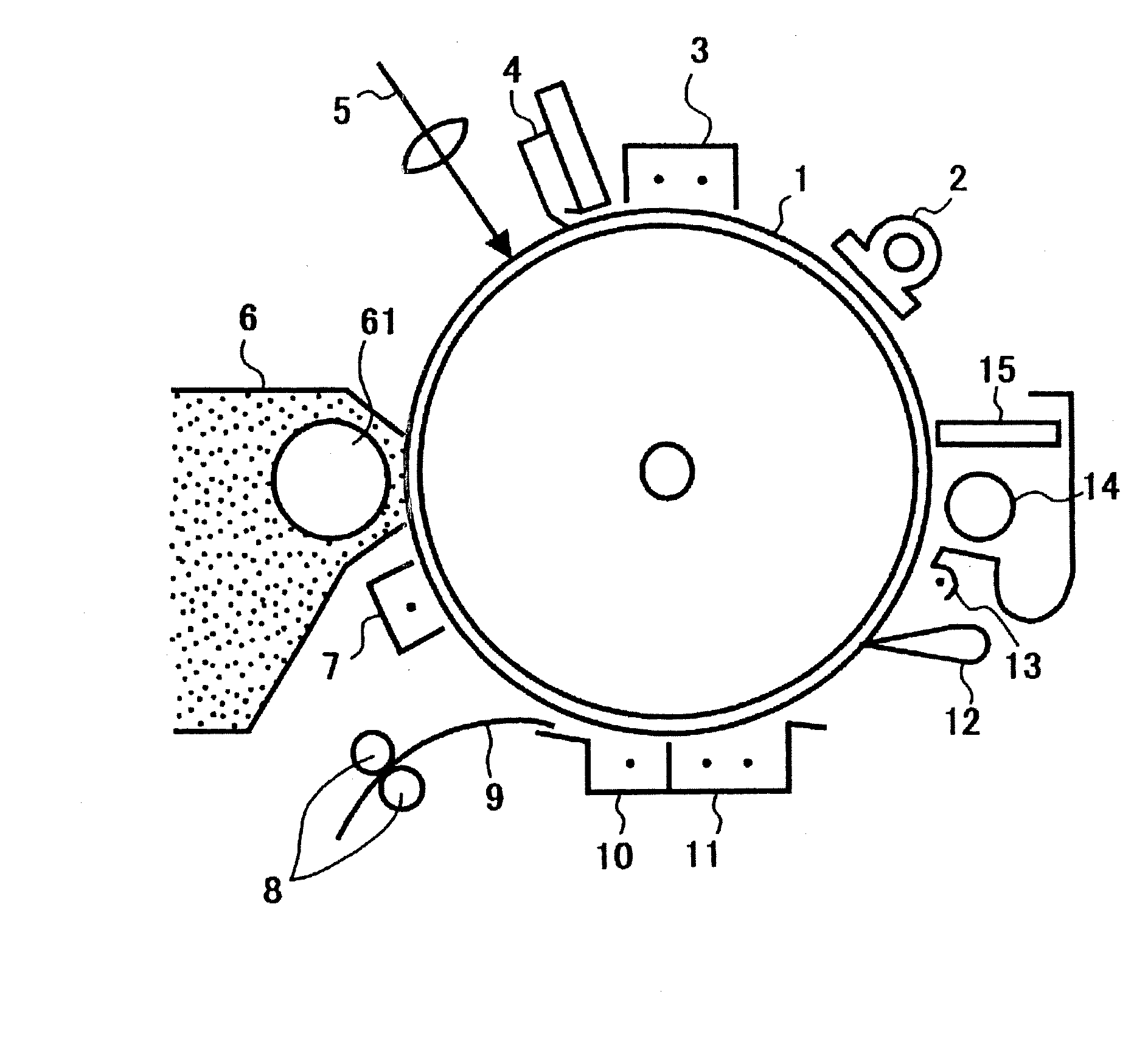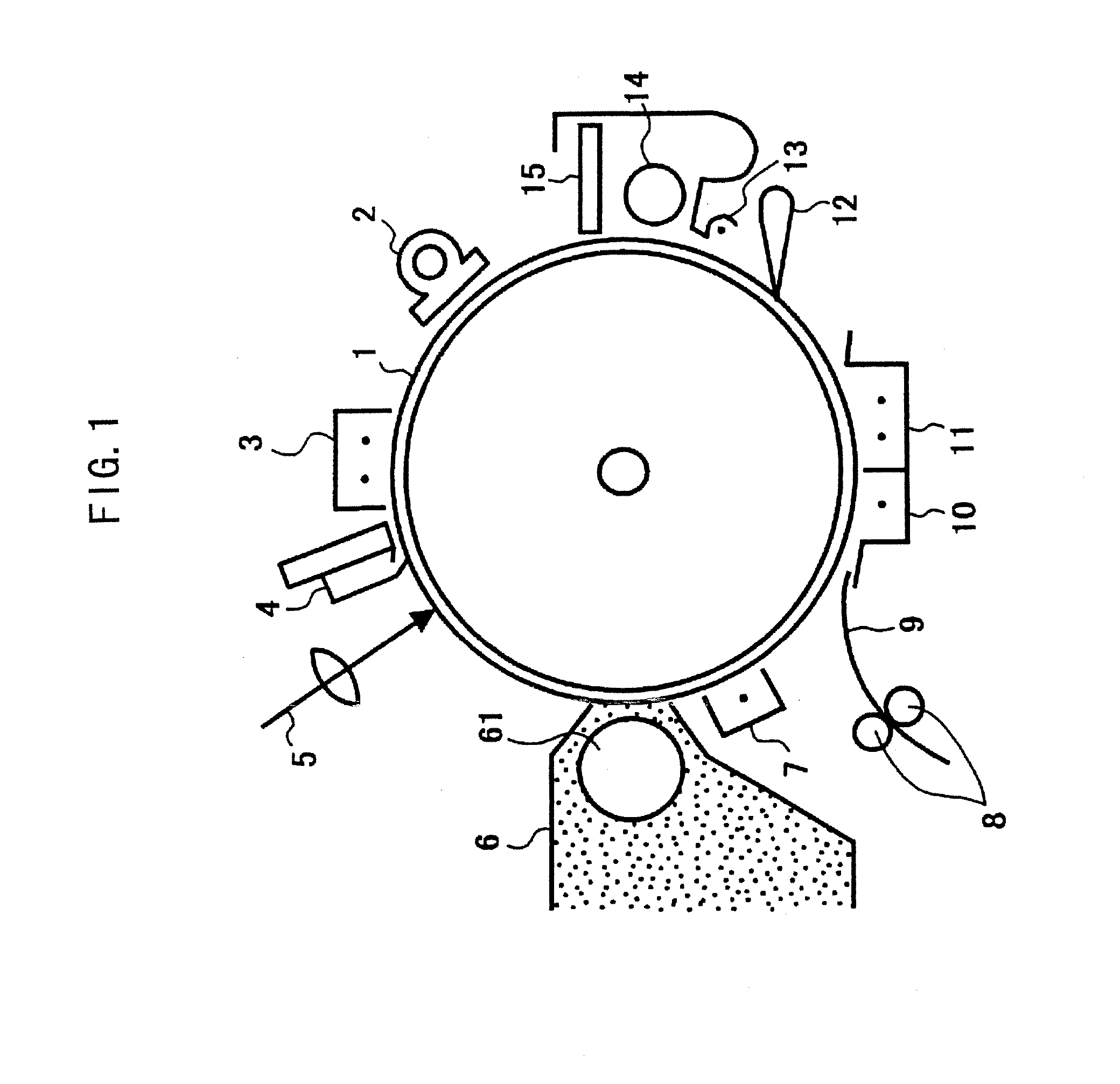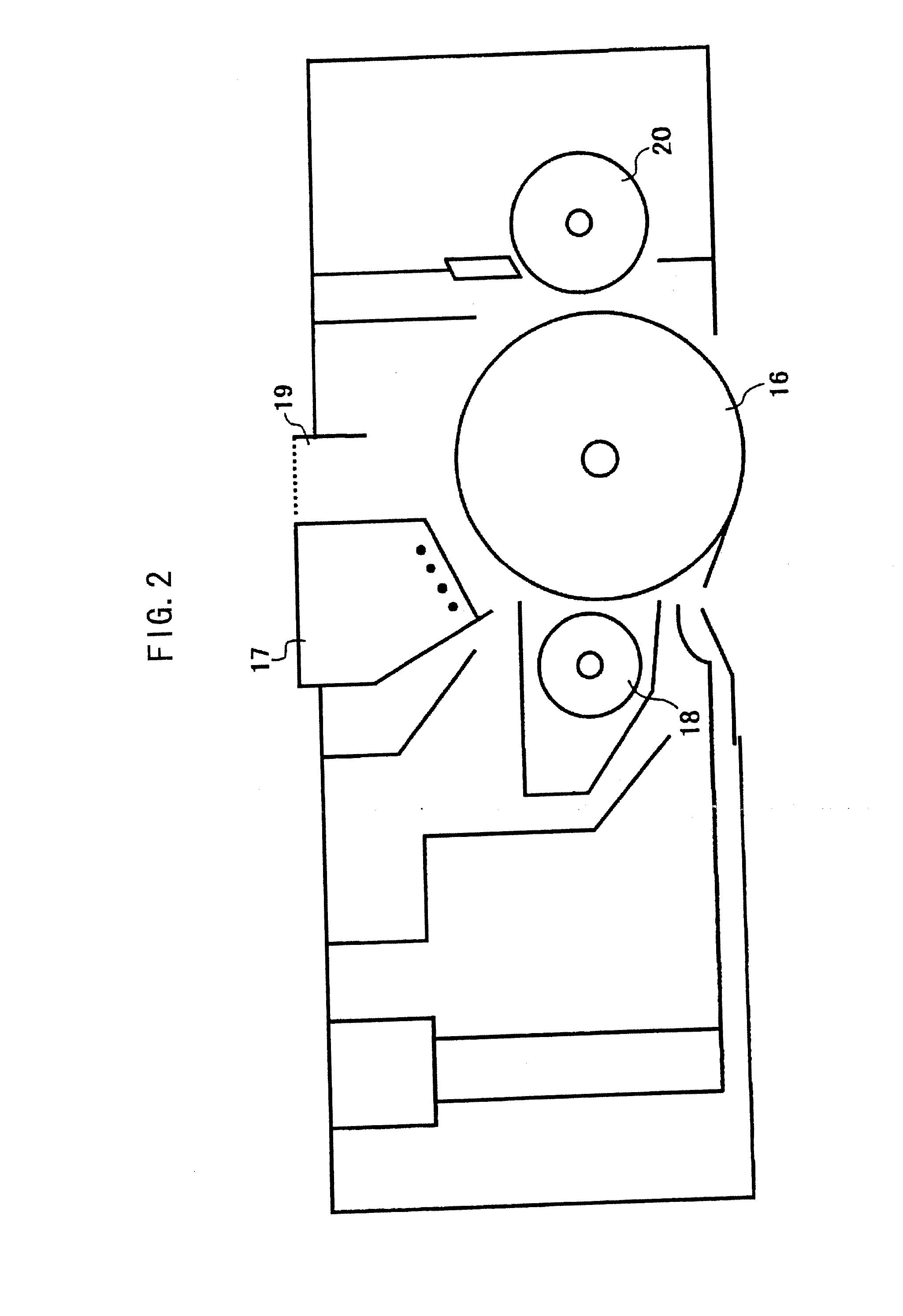Electrophotographic photoconductor and method of preparing same
a photoconductor and electrochemical technology, applied in the field of electrochemical photoconductor, can solve the problems of reducing the charge potential and light sensitivity, increasing the background stains, and deteriorating image quality
- Summary
- Abstract
- Description
- Claims
- Application Information
AI Technical Summary
Benefits of technology
Problems solved by technology
Method used
Image
Examples
synthesis example 1
Synthesis of Epoxy Group-Containing Amine Compound
[0131] In a reactor equipped with a stirrer, a thermometer, a dropping funnel and a reflux condenser provided with a trap to remove water formed during the reaction, 19.34 g (40.0 mmol) of 4-[2,2-bis(4-hydroxyphenyl)vinyl]phenyl-bis(4-methylphenyl)amine and 37.01 g (400.0 mmol) of epichlorohydrin are charged. The mixture was heated to 110° C. with stirring under a nitrogen gas stream. Then, while maintaining the mixture in the reactor at 100 to 120° C., 19.20 g (96.0 mmol) of a 10% by weight aqueous solution of sodium hydroxide were added dropwise to the mixture through 3 hours. During the reaction, epichlorohydrin emitted overhead from the reactor was condensed and returned to the reactor, while water was trapped and discharged from the system. After the addition of the sodium hydroxide solution had been completed, the reaction mixture was further reacted for 1 hour at 110° C. The resulting reaction mixture was allowed to cool to r...
example 1
[0134] An undercoat layer coating liquid, a charge generating layer coating liquid and a charge transporting layer coating liquid, which had the compositions shown below, were coated and dried one by one to overlay an undercoat layer of 3.5 μm thick, a charge generating layer of 0.2 μm thick and a charge transporting layer of 26 μm thick on an aluminum cylinder.
[0135] [Undercoat layer coating liquid]
Titanium oxide400 partsMelamine resin 40 partsAlkyd resin 60 parts2-Butanone500 parts
[0136] [Charge Generating Layer Coating Liquid]
Bisazo pigment of the formula shown below12partsPolyvinyl butyral resin5parts2-Butanone200partsTetrahydrofuran400parts
[0137] [Charge Transporting Layer Coating Liquid]
Polycarbonate resin10parts(Bisphenol Z-type polycarbonate resinmanufactured by Teijin Kasei Inc.)Charge transporting material10partshaving the formula shown belowTetrahydrofuran100parts1% Silicone oil tetrahydrofuran solution1part(KF50-100CS manufactured by Shin-etsuChemical Industry Co., Ltd....
example 2
[0140] A precursor liquid for a protective layer coating liquid having the following formulation was prepared:
[0141] [Precursor]
Methyltrimethoxysilane5partsPhenyltriethoxysilane5parts1% Aqueous acetic acid solution5.57partsTetrahydrofuran30.7partsn-Butanol3.67parts
[0142] The precursor liquid was then heated at 60° C. for 2 hours with stirring for silanolizing the methyltrimethoxysilane and phenyltriethoxysilane by hydrolysis. The resulting liquid was mixed with 4.2 parts of the epoxy group-containing amine compound obtained in Synthesis Example 1 above to obtain a protective layer coating liquid (II). An electrophotographic photoconductor was then prepared in the same manner as that in Example 1 except that the protective layer coating liquid (II) was substituted for the protective layer coating liquid (I).
PUM
| Property | Measurement | Unit |
|---|---|---|
| temperature | aaaaa | aaaaa |
| temperature | aaaaa | aaaaa |
| particle diameter | aaaaa | aaaaa |
Abstract
Description
Claims
Application Information
 Login to View More
Login to View More - R&D
- Intellectual Property
- Life Sciences
- Materials
- Tech Scout
- Unparalleled Data Quality
- Higher Quality Content
- 60% Fewer Hallucinations
Browse by: Latest US Patents, China's latest patents, Technical Efficacy Thesaurus, Application Domain, Technology Topic, Popular Technical Reports.
© 2025 PatSnap. All rights reserved.Legal|Privacy policy|Modern Slavery Act Transparency Statement|Sitemap|About US| Contact US: help@patsnap.com



